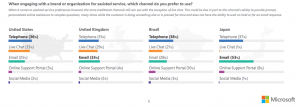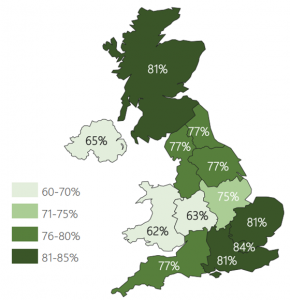
Right now, “incrementality” is a hot word in online affiliate marketing. According to our friends at Affiliate Window in a recent blog post, incrementality “consists of sales that an advertiser would not have obtained without a publisher’s contribution”. That means that incrementality measures more than just new customers — it is about sales that result from your marketing efforts through media partners that may not have happened otherwise.
To measure incrementality, it is vital to get a complete picture of where your sales are coming from, why they are happening, and which channels are making them happen. When used correctly, incrementality can also show you exactly which efforts are buying you new customers and which are simply targeting the customers you already have. And for an affiliate program, it can help show you exactly where your dollars need to go — and which affiliates can turn them into the biggest boost for your bottom line.
Avoid piggybacking to focus on new-to-file customers
If you are spending money targeting people who are already buying from your brand, are you investing your money wisely? Incrementality frames this question differently: If you invest your money in connecting with customers who may not have otherwise considered you for that specific purchase, is that a good investment? One of the biggest misconceptions about incremental marketing is that only new customer sales qualify as incremental ones. But that really depends on a company’s size and brand awareness.
For a small company, the goal would be for most customers visiting its website from affiliate efforts to be new to the brand. On the other hand, for an established brand like Amazon, affiliates simply are not as likely to drive a large number of new customers. Instead, Amazon should look for affiliates who can drive a sale that would not have happened otherwise.
Furthermore, many advertisers make the mistake of assuming that affiliates are creating new customers when, in reality, they are just benefitting from correlation, not causation. As an example, if a retailer has a 40% new customer rate, it is likely that an affiliate with low-value tactics, such as cookie-stuffing or forced clicks, is simply going to mimic that site-wide rate.
While it seems that the affiliate is driving new customers, he really is not — he is piggybacking on the folks who are already in the new customer funnel. As an example, a new customer who gets all the way to the merchant’s cart and then clicks on a made-up coupon offer was not a new customer who was aided or created by the affiliate in any valuable way. This is why it is really important to dig into your affiliates’ tactics to understand how they are promoting, not simply accepting the results.
There are a lot of absolute statements used in the affiliate space, such as “coupon sites have no value” or “loyalty sites are cannibalistic.” But each retailer’s business model is different, so you have to depend on data to figure out which model works for your business. Tools like Convertro, Adometry, and Google’s Multi-Channel Funnels analytics can help you parse data.
Lastly, merchants often tend to throw out the baby with the bathwater and fail to focus on what they can do to help make affiliates more incremental. We recently had a merchant who felt that affiliates were non-incremental because they were not closing new visitors. It turned out that they were giving their in-house CRM team very attractive offers that were not being given to the affiliates to help drive conversion. When we made this shift, the affiliates performed much better, and everyone was happier.
Look beyond the sale
In the absence of a sale, affiliates are often seen as failures when they can add great value in other ways — namely, positive brand awareness.
For example, Tiny Prints, a Shutterfly brand, has affiliates that run hundreds of blog posts around new product launches and offers simultaneously. Content syndication creates strong brand awareness and value, even if these potential customers do not buy something immediately. In fact, this degree of awareness is often the goal of PR and display campaigns, but this sort of outcome is typically ignored or overlooked in the affiliate channel.
Brands that need to liquidate merchandise can also trade margin for new-to-file customers and drive demand on their site. Reebok, for example, created a temporary outlet store, marked its retail stock down 50%, and gave an affiliate an additional exclusive discount. The result was a great offer for customers, a big earning for affiliates, inventory clearance, and a large number of new-to-file customers.
With channel possibilities growing every day, it is becoming more important to spend your money in the right places and really look into the correlation between inputs and outcomes from your affiliates and focus on creating an outcome that would have not happened otherwise. That is a definition of incrementality that everyone can be happy about and agree upon.
Digital & Social Articles on Business 2 Community
(300)










